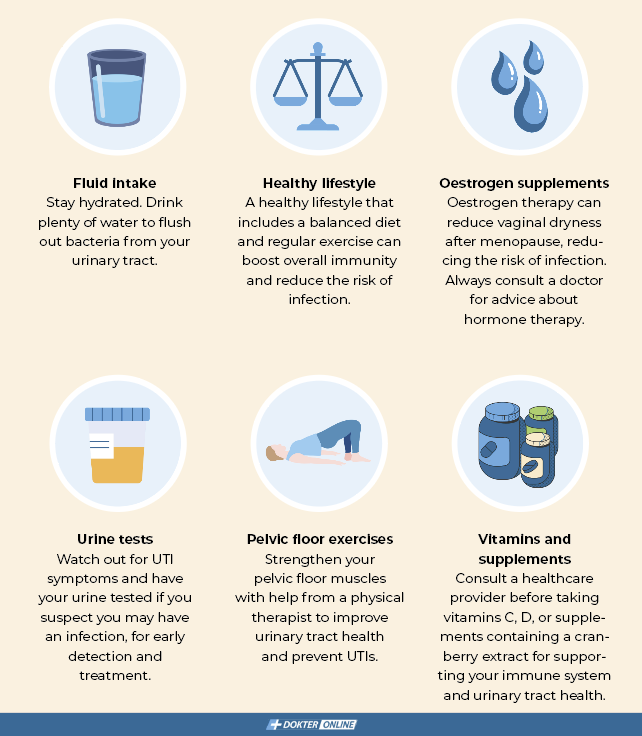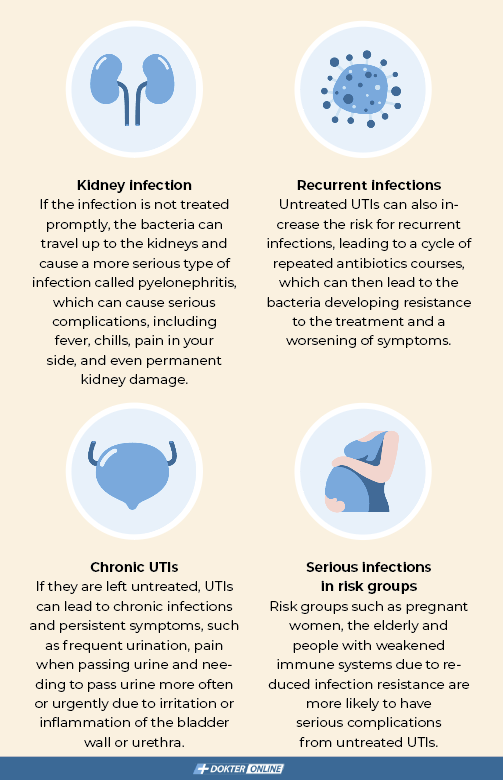
- Urinary tract infection
- Urinary tract infection
The importance of UTI prevention and awareness
Written by: Editors
Modified on:
Bladder inflammation, or cystitis, is an infection of the lower urinary tract that mainly affects women. It is usually caused by bacteria entering the urethra and multiplying in the bladder. Although this type of UTI is not life-threatening, it can cause discomfort and pain, and in some cases lead to serious complications such as kidney infection. However, many women don’t know why they keep getting UTIs. This article explains why.

One of the most common symptoms of a urinary tract infection is frequent urination, often accompanied by a burning sensation when passing urine. Other symptoms include needing to pass urine more often or urgently, cloudy or bloody urine, and pain in the abdomen or lower back. If you have symptoms such as a fever or chills, it might be a more serious infection. In this case, you should contact a doctor immediately.
Risk factors for women
Women are much more prone to UTIs than men mainly due to their anatomy. In women, the urethra is short and close to the rectum, which means bacteria can easily travel to the bladder. This anatomical characteristic, along with hormonal changes during for instance the menstrual cycle, makes women even more susceptible to UTIs. What’s more, the activity from sexual intercourse can also push bacteria up into the urethra, where it may cause infection.
Women get UTIs much more often than men, because they have a shorter urethra, which makes it easier for bacteria to reach the bladder.
Hormonal changes:
- Young women are much more prone to UTIs than men, mainly due to hormonal factors and the female lower urinary tract anatomy, making it easier for bacteria to travel to the bladder. Hormonal fluctuations during the menstrual cycle can also disrupt the pH balance in the vagina, providing a more favourable environment for fungi to thrive. Furthermore, the activity from sexual intercourse can push bacteria up into the urethra, which also increases the risk of infection.
- Elderly women are more prone to UTIs due to age-related physiological changes. Low oestrogen levels after menopause cause changes in the vaginal tissue and the body’s natural defences against bacteria to become weaker. Reduced mobility and health conditions can make it more difficult to go to the toilet, increasing the risk of infection.
Other UTI risk factors include: sexual activity, certain contraceptives, a weakened immune system, diabetes, and a hypertonic pelvic floor which may interfere with emptying of the bladder.
Precautions
In addition to regular check-ups, it is also essential for women to be aware of risk factors and ways to prevent UTIs. This includes drinking plenty of water to flush out bacteria from your urinary tract, avoiding irritants such as caffeine and alcohol, wearing cotton underwear, and avoiding using scented hygiene products to clean genitals. In cases of pelvic floor problems, physical therapy can help to relax pelvic floor muscles and facilitate urination, which in turn can reduce the risk of UTIs.
Prevention for young women:

Prevention for menopausal or postmenopausal women:

Every body is different, so needs are different, too. If you have recurring UTIs or specific concerns, it is advisable to consult a specialist for personalised advice and treatment options.
Early diagnosis and treatment
If you suspect you have a UTI and are experiencing symptoms, it is crucial to seek medical attention promptly. Early diagnosis and treatment can help prevent complications and speed up recovery.
If left untreated, UTIs can lead to more serious complications, including:

Link between vaginal yeast infection and UTI
The symptoms of vaginal yeast infections and UTIs can overlap due to shared risk factors, such as hormonal changes and disruptions of the vaginal flora. These disturbances may foster an environment that is more favourable to the growth of bacteria, making UTIs more likely.
It is important for women to be aware of the link between vaginal yeast infections and UTIs, so that if symptoms arise, they can be promptly addressed to avoid complications. Read our article Understanding, preventing and treating vaginal infections for more information about vaginal yeast infections.
Conclusion
This article highlights the need for increased awareness about UTIs and how to prevent them. A comprehensive understanding of UTIs and UTI symptoms, risk factors and prevention measures, can empower women to make informed decisions about their urinary health. Prompt diagnosis and intervention are crucial for preventing complications and relieving symptoms. Be alert of symptoms, take preventative measures and seek timely medical attention to maintain urinary tract health. If you have recurring UTIs or specific concerns, it is advisable to consult a specialist for personalised advice and treatment options.
It's important to be proactive when it comes to UTI health: be alert of UTI symptoms, protect yourself from UTIs, and get medical help as soon as you notice any symptoms.